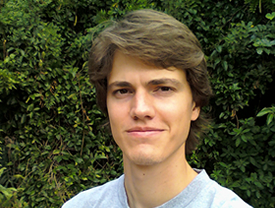| 50% of you think that the South African Government has the potential to make the biggest impact on reducing carbon emissions in South Africa; | |
| 8% opted for the technology sector; and | |
| 42% opted for private industry. |
Shuttle Discovery landed for the last time at Florida’s Kennedy Space Centre on 9 March 2011. Discovery has completed 39 space voyages (its first being on 30 August 1984), has spent a total of 365 days in space and travelled more than 238 million kilometres during it’s lifetime.

 |
Dane du Plessis |
If it’s green or wriggles, it’s Biology.
If it stinks, it’s Chemistry.
If it doesn’t work, it’s Physics.
My journey from Rhodes University in Grahamstown to Cape Town provided me with enough time to think about this very statement. Will I, a second year student, be able to add value or will I be the one responsible for not getting things to work. I was afforded an opportunity by the researchers in the Nuclear Physics Department at iThemba LABS in Cape Town to spend my December holiday working on a project. I was tasked with developing a computer program capable of analysing data acquired by the newly purchased TIGRESS detector used in nuclear structure research. It is envisaged that the code, which I will develop, will be used to improve the energy resolution of the TIGRESS detector. The scientists at iThemba LABS like naming things – they even have a detector array used for gamma-ray spectroscopy called AFRODITE.
iThemba LABS is one of seven national research facilities administered by the National Research Foundation, with sites located in the Western and Eastern Cape and Gauteng provinces. I went in with my own ideas of what a “scientist” looks like; how he or she behaves; whether or not they are approachable; and whether or not they have a sense of humour. My interaction with the researchers at iThemba LABS has been amazing. Their willingness to assist, offer advice, encourage and support me made this science experience one of the most memorable thus far. I was not only exposed to the ROOT programming framework which was developed and used at CERN to analyse particle physics data, but I also got an opportunity to find my own (creative) solutions to the problems I was faced with.
I encourage you to regularly visit their webpage (www.tlabs.ac.za). Who knows, you might also get an opportunity to be exposed to the wonderful world of experimental nuclear physics.
Dane du Plessis
(Now a third year student at Rhodes University)
